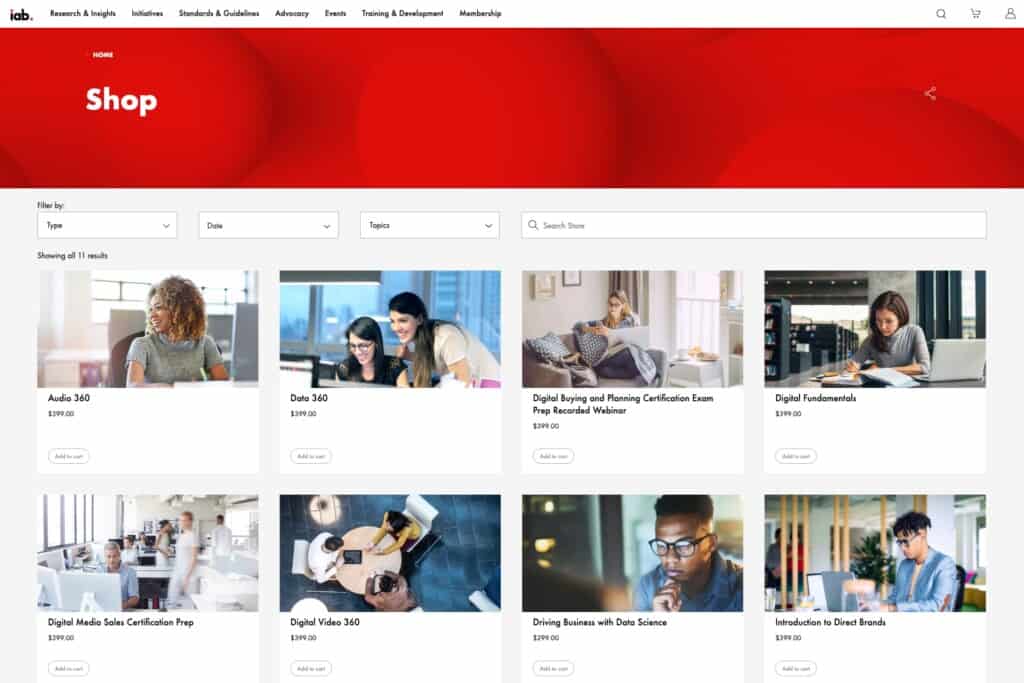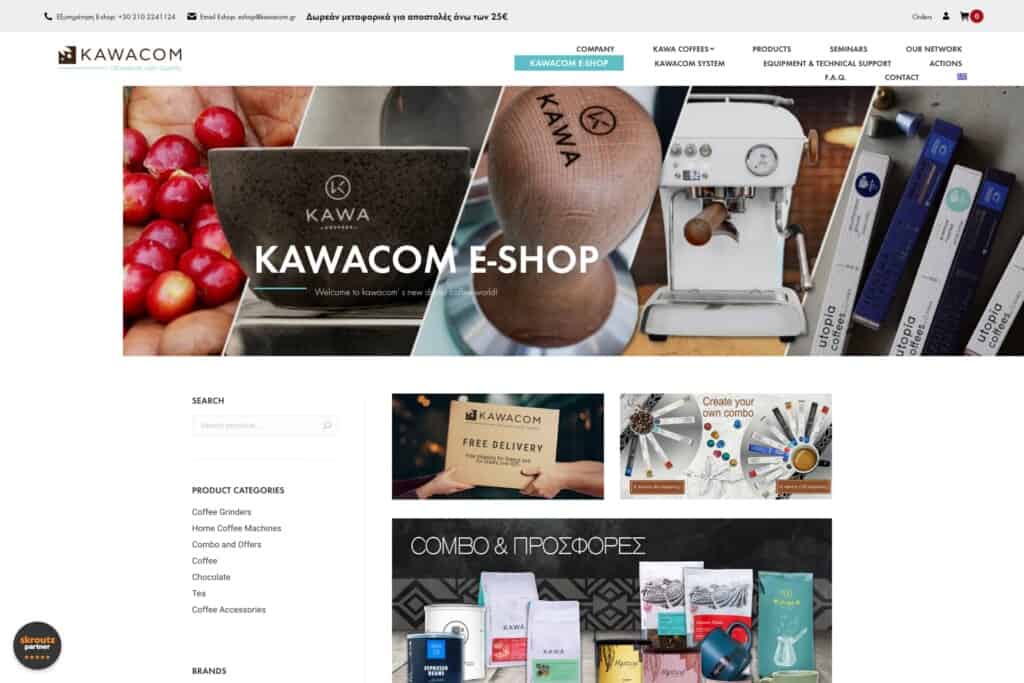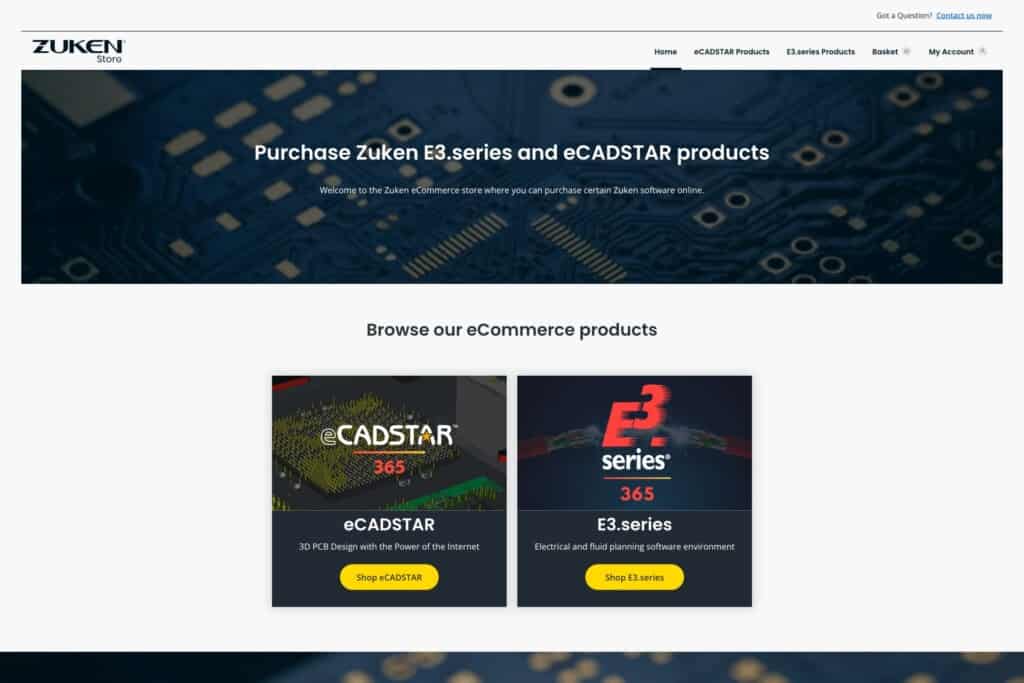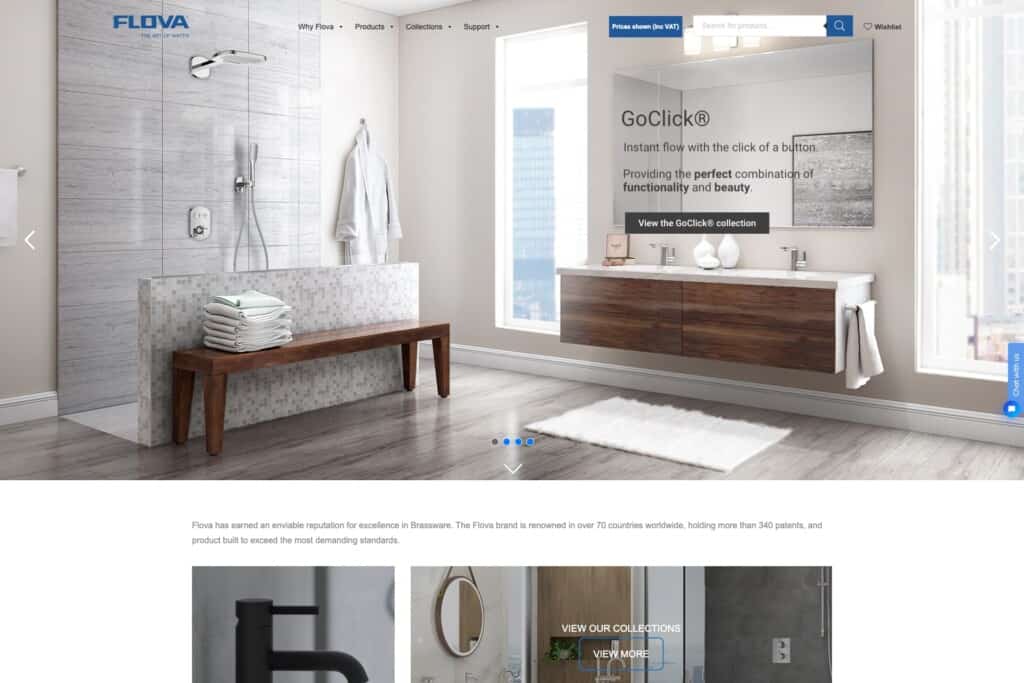B2B eCommerce is on the rise – what’s behind it?
Opportunities that exist in the B2B eCommerce market have not received as much attention as its B2C counterpart, but that’s beginning to change. There’s good evidence that B2B eCommerce is on the rise – and things are moving fast.
B2B eCommerce has seen rapid growth, especially post-pandemic, with global B2B eCommerce transactions passing $9 trillion in 2021. This trend is likely to continue into the foreseeable future as business needs evolve, with the market forecasted to be worth over $25 trillion by 2028.
For businesses wanting to enter this space, it’s important to consider your choice of website platform. It will need to be able to handle larger, more complex orders.
As is the case with all eCommerce sites, it will also need to provide a checkout experience that is as seamless as possible and be secure to protect sensitive data.
WordPress and WooCommerce are great options for businesses that want to adapt their sites to different markets as they allow you to add and remove different functionalities with ease.
In this blog post, we’ll look at what’s driving the growth of B2B eCommerce, and important factors to consider when operating within this space. Here’s an overview of what to expect:
-
Your site shouldn’t be the only point of contact
-
Different markets have different needs
-
Greater efficiency is desired by business customers
-
Streamline your sales workflows
-
Support your eCommerce sales funnel with solid strategies to get noticed by customers
The latest industry news delivered straight to your inbox
Want more content like this? Subscribe to our newsletter for the latest blog updates.
B2B goes digital
Your site shouldn’t be the only point of contact
Although business customers will have different needs, their expectations are still largely the same as non-business customers.
According to research by Wunderman Thompson, 52% of B2B buyers have felt frustrated by an online shopping experience.
They expect to be able to make purchases online and they expect it to be a relatively frictionless experience.
Having a strong digital presence doesn’t necessarily have to replace your existing sales models. Person-to-person interactions are still important, but B2B customers are increasingly opting to take an omnichannel approach to purchases, a trend that’s also reflected in B2C eCommerce figures.
A 2021 survey by McKinsey found that:
- B2B customers want (and expect) to engage across ten or more channels during their interactions with suppliers
- 61% of B2B buyers believe they can get just as much value from video calls with suppliers as they can from in-person meetings
- 68% of customers see face-to-face visits as a sign of how much value suppliers place on the business relationship
- Almost half of market share winners across various industries have adopted hybrid sales models
The Interactive Advertising Bureau (IAB) provides training and software for professionals working in advertising, media and marketing. Using its WooCommerce store, the IAB sells its training and software products online.
The company also produces podcast, runs events, and promotes its offering on social media, a good example of an omnichannel strategy that covers multiple platforms and spaces that are online and offline.

IAB’s audience are media-literate professionals, so naturally the website is visually engaging and integrates seamlessly with their social platforms.
The website contains a large amount of industry-specific information and research, whereas the social accounts give a visual complement to this information and directing its audience back to the information that they need.
The organisation has a strong search engine presence in Google’s rankings and media professionals seeking out their resources can also access them easily via Google’s ‘News’ tab.
IAB also utilises LinkedIn’s live events feature for certain events. The advantage is that event organisers can see their audience’s reaction in real-time whilst also making it accessible to viewers who would not have been able to attend the event in person.
Different markets have different needs
Building B2B eCommerce into your business strategy opens up international markets, giving you the potential to attract customers you may not have reached before.
Consider how well your site caters to the needs of different markets. Behaviour may vary across countries, so what works for local audiences won’t always translate into other markets.
A 2020 Gartner survey found that ease of use and price are fairly consistent factors in purchase decisions, but there are slight regional differences. For German B2B customers, free trials are the most important consideration when purchasing software.
Other factors to consider when optimising your site for global markets:
- Having a local domain name
- Ensuring your content is SEO-friendly across multiple countries’ search engine results
- Having information available and accurately translated into multiple languages

eCommerce efficiency
Greater efficiency is desired by business customers
The pandemic, lockdowns and social distancing measures resulted in major disruptions across supply chains and a shift towards digital solutions.
Customers and retailers amped up eCommerce in order to keep operating. The trend continued even after lockdown measures were lifted, as businesses recognised the benefits of operating online. These benefits also apply in the B2B space.
Advantages to conducting B2B sales online include:
- Reducing strain on organisational resources
- Increasing efficiency through digital records for sellers
- Improving speed and convenience for buyers because visiting a physical location is no longer needed
When building a B2B website or developing new functionalities into an existing one, there are a few key points to remember:
- It should be as intuitive as possible
- It should provide a streamlined checkout experience
- It should be easy for buyers without technical knowledge to understand what they need
Another advantage of eCommerce is that it allows you to gather valuable data on your customer base. Gaining insight into online behaviour will help you provide digital experiences that are better aligned with their needs.
This is where website analytics come in, supporting you to gather data about how the site is being used and analyse it according to your chosen metrics.
Using this data to provide more personalised experiences will result in higher customer retention rates and an increase in sales conversions.
Streamline your sales workflows
Not only does eCommerce make for a better buyer experience, but it’s also an effective way to streamline workflows and automate key processes, reducing the amount of manual administration required.
You can exchange messages with customers, integrate with email marketing, provide updates on order status or shipping costs, and create personalised email templates. And advancement in artificial intelligence (AI) will no doubt bring opportunities for greater functionality and even better customer experience in the future too.
From an operational perspective, having a website that integrates with your enterprise resource planning (ERP) software allows for more dynamic store management.
Greek coffee wholesalers, Kawacom Helles, has this functionality built into their WooCommerce store, allowing product updates to occur automatically on the website and orders to be sent directly to the ERP.
Not only does this provide greater efficiency, but the modern, fluid aesthetic also triggered a rebrand for most of their products.

Case study
Simplifying complex purchases for multinational business, Zuken
Simplifying complex purchases was a key consideration for our client Zuken, a global software company offering design solutions for PCB & electrical systems.
To enter the B2B eCommerce space for the first time, they needed a website that showcased their products with a range of different configurations and made it easy for buyers to establish what solution they required.
It was essential for their eCommerce store to make the selection process as frictionless as possible.
Zuken serves businesses all over the world, so international purchases were front of mind when developing their new online store, with the inclusion of multiple language options, currencies and local taxes.

Customers can purchase licenses or subscriptions that exactly suit their needs using the product customiser tool. Buyers also have an account area where they can save and retrieve customised baskets, view their license subscriptions and access their purchase histories.
Your website can work harder for you
Contact us to find out how we can help you use WooCommerce to streamline your business processes.
Informing purchase decisions
Support your eCommerce sales funnel with solid strategies to get noticed by customers
Adopting eCommerce in the B2B market leads to greater visibility in front of a wider audience.
B2B decision makers are increasingly likely to be millennials. The majority of this demographic are digital natives who grew up online. They are familiar with shopping on mobile devices and using social media to inform their purchase decisions.
Not only does a strong digital presence open up opportunities across multiple regions and suit the buying preferences of digital natives, but it also provides buyers with the information they need to make informed purchasing decisions.
Having a website with up-to-date product information and the ability to track shipments eliminates the need for lengthy phone or email interactions. Instead, it frees up time to focus on building client relationships and handling more complex enquiries.
Part of this involves making sure adequate technical support is available for business clients purchasing complex equipment.
Potential buyers want to be reassured that your products work as advertised, and that they can be assembled, installed and used without pushing too far outside of the buyer’s skillset. They also want to know that additional support is available, should they need it.
Brassware manufacturer and wholesaler Flova took this approach with its WooCommerce site, which has an entire page dedicated to installation videos under the ‘Support’ tab in the main menu.

In addition to this, it displays a digital copy of their brochure as well as warranty information, ensuring that customers have access to instant post-purchase support for basic enquiries.
Takeaways
B2B eCommerce is on the rise
The growth of B2B and wholesale sites is likely to continue into the future as the marketplace evolves towards digital solutions. There are many reasons to adapt your business model to capture this market:
- B2B customers expect the same flexibility and convenience they experience in the B2C market
- It opens up possibilities for growth in global markets
- User experience and customer convenience are vastly improved, especially for digital natives
- It’s easy for customers to make informed purchase decisions
- It simplifies workflows, increases efficiency and provides valuable customer insights
The eCommerce space has evolved rapidly since the pandemic.
It’s vital to stay on top of emerging trends in the market and evolve your website in line with changing business needs. You need to be able to adapt your digital platforms to keep up.
Our Always Evolving service model is about doing just that. The work isn’t done when a website launches – we’ll continue collaborating with you long-term to adapt your site as your business grows.
A digital partner that helps you grow
Feel like a change? We can help with that.